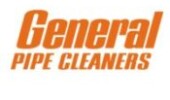
Ethanol Handling: A Health & Safety Perspective
April 1, 2012 | By Marissa Cutts
Clear best practices and improved training are crucial undertakings for owners.
In the past few years, there has been an increased focus on health and safety directly related to the use of ethanol blends in the geo-thermal industry. Unfortunately, this came about due to an incident in Ontario. Following this incident there was a strong response by producers, distributors and industry associations to establish clear best practices and to improve training in the industry.
Although this article will not cover all of those obligations, it will be a guide to setting you on the right track.
One of the frequent comments we have heard recently is, “What’s the big deal, this product has been used safely for years?” Although there is some truth to the fact that the safety record for ethanol blends in the geothermal industry has been excellent, one incident is too many and a reoccurrence will hurt us.
There is also one big misconception in the industry that needs to be cleared up. Many believe that since ethanol blends are diluted with water that they are no longer flammable. Ethanol blends are still flammable at 20 per cent dilution.
I have never been to a training session where this statement was not immediately followed by the question “So what percentage will it no longer be flammable at?” Though this a good question, it is not a relevant one. According to CSA Standard CAN/CSA 448-02, ethanol mixtures should be used at a concentration between 20 and 27 per cent in a geothermal system. This range is not only for burst and freeze protection, but it is also where the ethanol is stable and will not ferment and corrode the metal components in the system.
YOUR RESPONSIBILITIES
As business owners in the geothermal industry, we have some very specific responsibilities in regards to the use of ethanol blends.
1. Provide staff training
2. Provide safety equipment
3. Have an emergency plan
Employee training must include Workplace Hazardous Materials Information System (WHMIS). This training will cover basic information about working with hazardous products. It can be done in any number of ways, including in class and online. WHMIS training is a legal requirement in any workplace where hazardous products are present.
In addition to general WHMIS training, it is critical that product specific training is also done for ethanol blends. This training will cover product hazards and specific handling requirements. Training is available through distributors, industry associations and manufacturers.
In January of 2011, the Canadian GeoExchange Coalition (CGC) and the Heating, Refrigeration and Air Conditioning Institute of Canada (HRAI), in conjunction with manufacturers and geothermal contractors put together an Industry Information Note (CGC-IN-2011-01) and a Technical Information Note (CGC-TN- 2011-01) that cover the safe handling of ethanol blends.
TRANSPORTING BLENDS
If your employees will be transporting ethanol blends you will also need to have Transportation of Dangerous Goods training. Although there are small quantities of flammable products that can be transported without TDG training being required, it is important that you are clearly aware of your legal requirements.
The last two types of required training directly tie into two of your other responsibilities; emergency planning and providing safety equipment.
Owners are responsible for having an Emergency Plan that covers what to do in the event of a spill, fire, accidental contact or any other reasonable foreseeable incident. Once this plan has been created, employees need to be trained on how to respond to any incident. It is important to note that emergency plans apply to job sites as well as your shop.
Employees will need to know where there is fresh water available in the event of eye contact, the location of fire extinguishers, and the physical address of where they are working in the event that emergency services need to be contacted. This is especially important on new construction sites.
Specific training also needs to be provided to employees on how to properly use safety equipment relating to product handling. This can include the proper use of grounding and bonding equipment, safety goggles and fire extinguishers. This training can be on the job training, or can be provided by equipment manufacturers and distributors.
RECORD KEEPING
As you provide training it is important that records are kept of how and when employees were trained. This will protect you and your business in the event of an incident.
I am often told that employees have been given equipment and training but still do not use it or follow the rules. Through product specific training employees will come to properly understand the hazards associated with handling ethanol blends and take a more active role in protecting themselves.
It is also important to remember that you have a legal obligation to provide competent supervision. One of the responsibilities of this competent supervisor will be to ensure that safety equipment is being properly used.
Share this article with your employees. Watch for a follow up article in HPAC focussed on employee obligations. <>
Marissa Cutts is the administrative manager at Anchem Sales and is responsible for Regulatory Compliance and Health & Safety. She has delivered ethanol handling training to over 200 operators from across Canada. She was a member of the CGC HRAI joint committee that developed the “Standard Operating Procedure for Handling Ethanol.”




